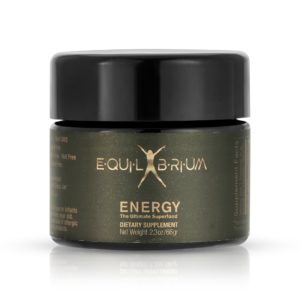Conventional medicine tells us that steroids are a safe and effective way to deal with joint pain. In fact, it seems as though everyone from athletes to your grandma turns to steroid injections to keep the pain away. But does that mean they really are safe? A new study from the Boston University School of Medicine suggests that conventional wisdom may not be so wise after all.
Steroid Injections Destroy Joints
Corticosteroids are synthetic versions of cortisol, an immune-suppressing hormone we produce in our adrenal glands. They are commonly used to relieve inflammation and pain, from inhaled corticosteroids for asthma and pill forms for autoimmune disease, to injections for osteoarthritis and joint injury.
However, steroids carry a significant risk of bone and joint damage accelerating. In a review of studies on complications linked with steroid injections, a team of researchers led by Dr. Ali Guermazi found four major risks: accelerated osteoarthritis progression, stress fractures occurring beneath the cartilage, rapid joint destruction with bone loss and death of bone tissue.
Patients with early stages of osteoarthritis and younger patients stand to lose the most. Who would be willing to risk needing a knee or hip replacement at 30- or 40-something?
“We’ve been telling patients that even if these injections don’t relieve your pain, they’re not going to hurt you,” Dr. Guermazi commented, “But now we suspect that this is not necessarily the case.”
This is not the first time that steroids have been called out by the evidence. In May 2017, a study published by JAMA found greater cartilage loss among people injected with the drugs. There was no significant difference in knee pain either. The idea behind steroid use is that, like anti-inflammatories, they may spare the joint from the destruction caused by inflammation.
However, patients receiving steroid injections once every three months lost double the cartilage compared to those only getting saline shots in the 2017 JAMA study. The steroid group lost 0.21mm of cartilage; the saline placebo group lost only 0.1mm. If there was any benefit, it would have merely been a short-term relief from pain.
Ruined Lives
In one of the worst cases, a young woman complained of hip pain soon after childbirth and was given a steroid injection to cool the inflammation. When Dr. Guermazi saw her again six months later, she couldn’t walk and the head of her femur was gone. It looked like the bone vanished, and she needed a total hip replacement.
While his recent study only found serious complications in eight percent of patients, the question remains: what if you are one of those eight? Looking at the 2017 study’s figures, it is possible that many more had complications waiting to appear.
The problem with steroids is that they cause loss of tissue proteins. Research involving Crohn disease patients shows a dramatic increase in urea, the breakdown product of protein. After just two weeks, their levels of urea rose by almost four times. Protein-rich tissues include muscles, bones, and joints. And, poor blood supply inside the joints gives them poor recovery prospects.
Steroid Shots Can Harm Our Mental Health Too
Marc (full name withheld at his request), one of many regretful patients, learned how steroid shots could ignite anxiety and affect your mental well-being:
I had a cortisone shot for a relatively minor shoulder injury two months ago. Within 24 hours, high anxiety overtook me. I definitely have a history of anxiety, but this was through the roof, at times feeling like I was plugged into a million volts of electricity. Even one month later, my eyelids were fluttering from anxiety; something I never experienced before. The orthopedic doctor who gave the shot told me that he has never seen anxiety as a side effect in all his years of practice, but I’ve found many people online describing exactly what I’ve been experiencing.
Marc told us that the anxiety caused by his steroid shot has persisted for two months, although he may be beginning to experience relief with taking ashwagandha and bacopa supplements. His experience with mental health issues is not an isolated anecdote.
Studies have found links between corticosteroid use and mental health complaints such as anxiety, depression, and insomnia, but there is often no “average” increase in severity because the effects depend on the individual.
Collagen For Joint Pain
To avoid steroid injections, we must relieve pain and inflammation in the joints. One way could be collagen supplementation. A review of studies found that taking collagen significantly reduced the stiffness sub-score of the WOMAC scale, an osteoarthritis index, while relieving pain.
If you want to take collagen, remember that there are two types. Only hydrolyzed collagen (hydrolysate) can help with joint regeneration, while undenatured collagen from chicken cartilage can prevent inflammation. All trials included in this review ran for at least two months, so don’t be disappointed if relief doesn’t come overnight.
What Are The Alternatives To Steroids For Joint Pain?
Curcumin, the most-studied phytochemical in turmeric, can be very effective for osteoarthritis over longer periods. When 100 people were given curcumin for eight months, they enjoyed a broad range of benefits. Their scores on a 100-point performance scale rose from 73.3 to 92.2, meaning they regained the ability to do normal activities with only minor symptoms. Pain and function scores improved, their walking distance on a treadmill increased by four times, and they needed far less medical treatment.
Perhaps the cheapest way to relieve joint pain is olive oil. A review of research found that extra virgin olive oil, an ointment containing olive extract and an oral water extract all effectively relieved osteoarthritis symptoms. In the study using extra-virgin olive oil, it was more effective than an NSAID gel from week two of treatment. Olive oil works due to its anti-inflammatory and antioxidant effects. But some components also maintain the ability of cells to produce collagen. When consumed, it may even aid the internal recycling systems of cells including those in the joints.
Regenerative treatments, including platelet-rich plasma (PRP), are rapidly increasing in popularity for conditions causing joint pain. One of the many studies on PRP published in 2019 found significant benefit in hip osteoarthritis. Two-thirds of participants found at least a fifty percent reduction in pain by three months, and disability scores significantly improved.
Those with less severe disease were more likely to benefit. Do not use therapies such as PRP alone, however. One study found that PRP from older men with severe osteoarthritis actually increased inflammation and suppressed joint regeneration. Therefore, we may have to boost our overall health and soothe systemic inflammation before trying PRP.
Steroid injections have brought serious harm to so many patients. But, there are ways you can avoid the need for them if you have joint pain. The optimal solution is different for everyone. So, it’s best to enlist the help of a holistic health professional to determine the right course for you.
 Alexandra Preston is an Australian naturopath, passionate about empowering others to take charge of their health and healing the planet. Her special area of interest in natural health is antiaging; she also loves the beach and is a semi-professional dancer.
Alexandra Preston is an Australian naturopath, passionate about empowering others to take charge of their health and healing the planet. Her special area of interest in natural health is antiaging; she also loves the beach and is a semi-professional dancer.
Submit your story or essay to Buzzworthy Blogs
-
 Equilibrium Energy Superfood 2.3 oz$59.45 — or subscribe and save 5%Rated 4.91 out of 5 based on 11 customer ratings
Equilibrium Energy Superfood 2.3 oz$59.45 — or subscribe and save 5%Rated 4.91 out of 5 based on 11 customer ratings



